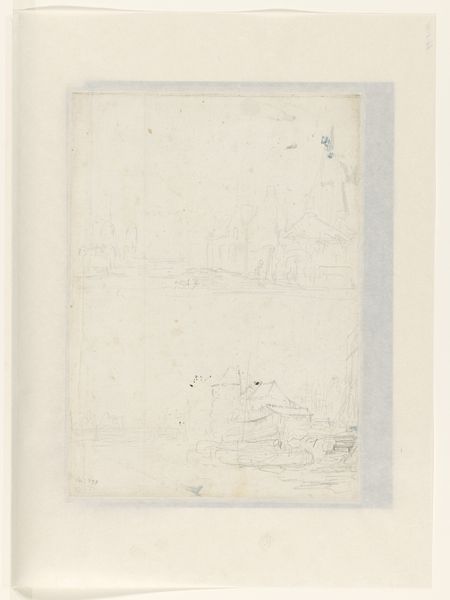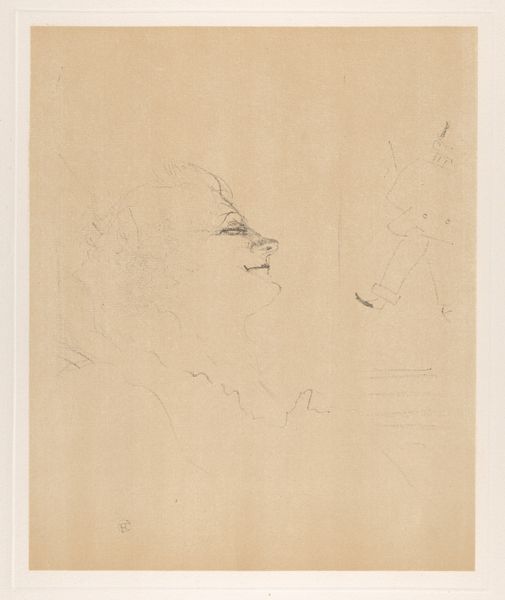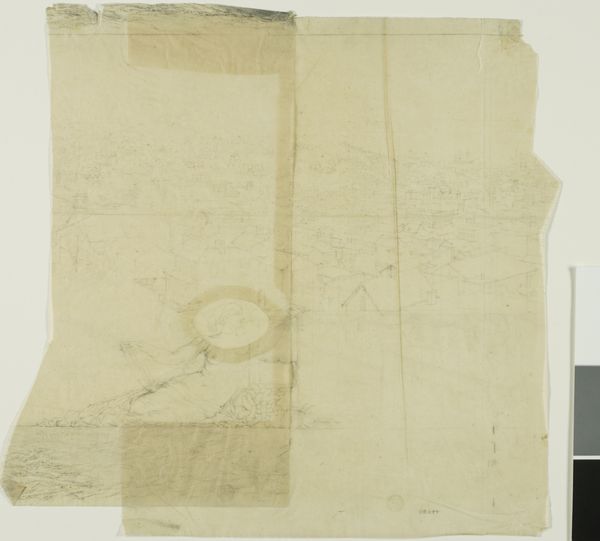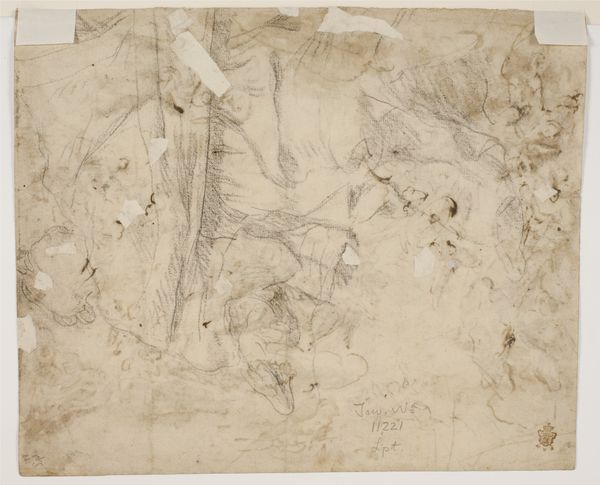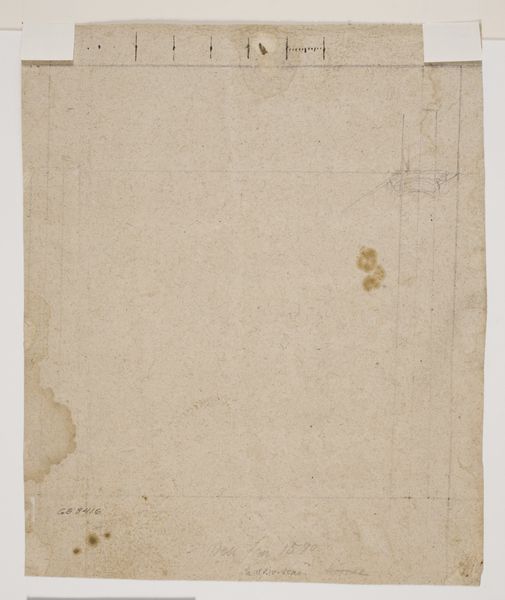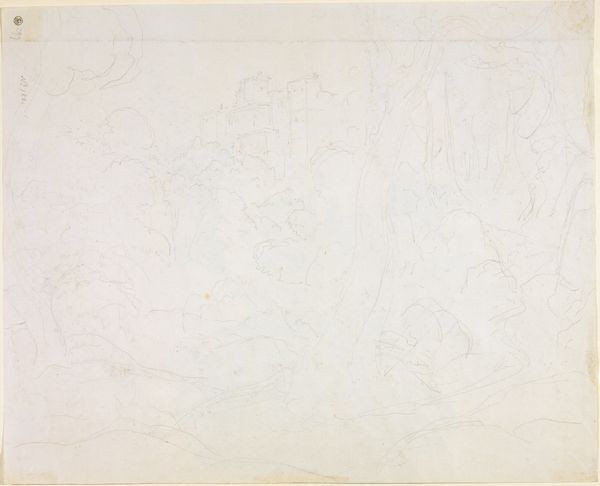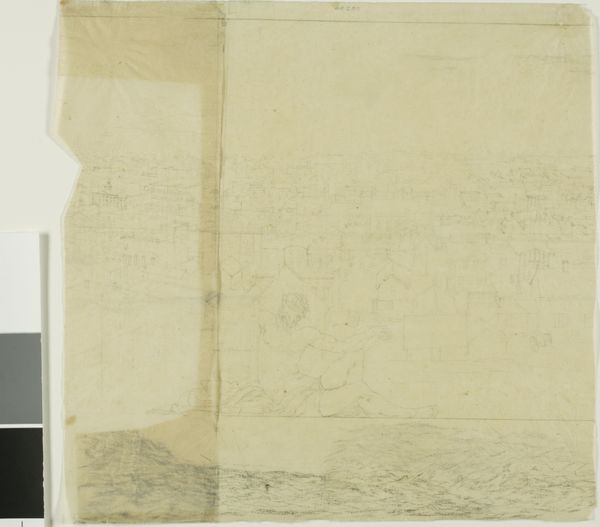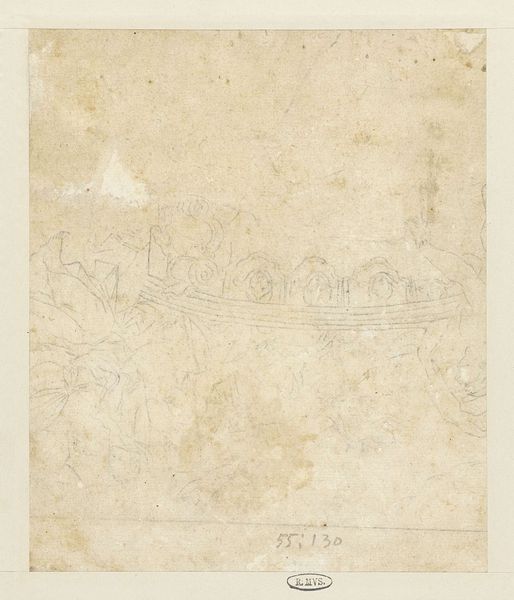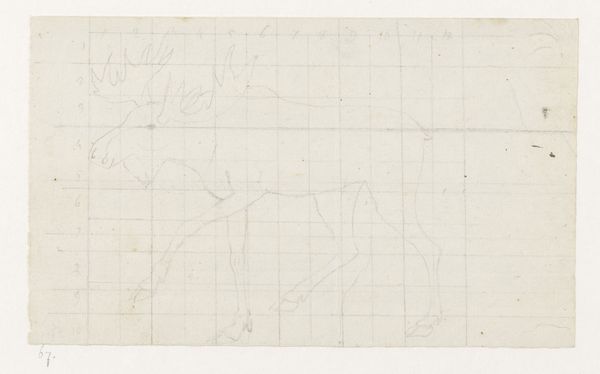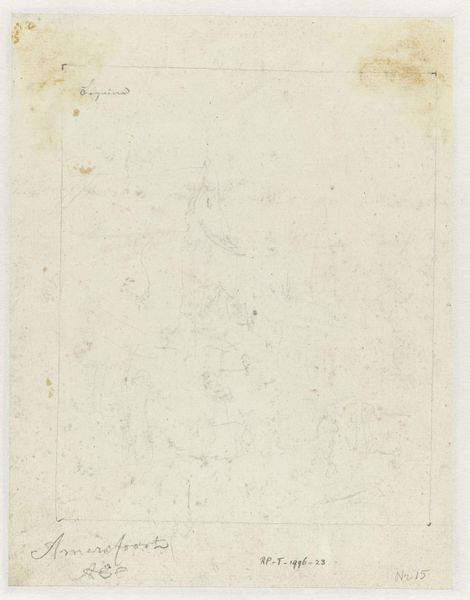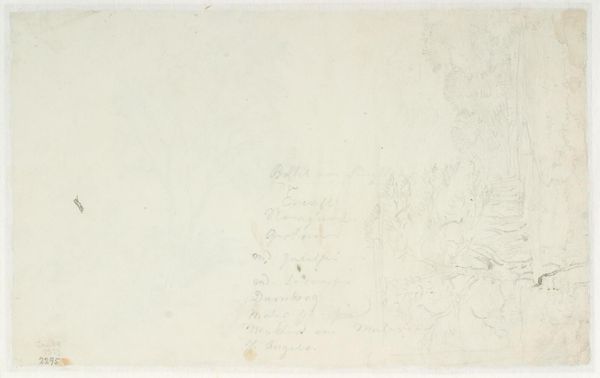
Dimensions: 188 mm (height) x 278 mm (width) (bladmaal)
Curator: P.C. Skovgaard's "Skitse af træer," a pencil drawing from between 1850 and 1855, draws us into a hushed and private encounter with nature. It is currently held at the SMK. What strikes you first about it? Editor: Its quietness. There’s a subtle energy here, a sense of growth almost captured mid-thought. The Romanticism seeps out. The material handling seems simple: just graphite on paper, and the composition feels quite spare—a focus on process more than perfect execution. Curator: Exactly. Think of Skovgaard's other landscape work—those sweeping vistas, epic portrayals of the Danish countryside. This is its humble counterpart. I wonder if it gives us a sense of him finding his grand style, honing it. Almost like he is trying to talk to these particular trees, intimately. Editor: In that moment of Romanticism's search for the sublime, one could see nature was less about grand awe and more about everyday engagement with natural elements: Pencil becomes this tool for the common artist, affordable, accessible, and a means of directly translating experience. What kind of paper is used I wonder? Curator: That’s a lovely thought. There’s definitely an emphasis on simplicity and accessibility. The paper almost has a fragile look and the thin pencil lines are light like breaths. It’s about really studying this small piece of the world, but it might actually be a very well fabricated piece, too. The best way to learn this would have been studying up close, through art itself. Editor: Indeed. And considering this, how landscape imagery had a resurgence during his time, maybe even due to an upswing of materials production as more artist are becoming their own business and needing those sketches to build new projects or ideas. Curator: Precisely, you can really envision him outside drawing, not worried about making it perfect or pretty. He's engaging. A landscape becomes so personal here: less like an object of spectacle. Editor: Yes. This gives you that real understanding of the value of these 'minor' works—illuminating process, revealing shifts in what was seen as worthwhile to portray. Curator: Absolutely. It's an open invitation to consider both how nature has been constructed through a single person’s eye as an artistic and spiritual act. Editor: A view I agree with—the quiet study of trees reminding us how art springs from material, work, and moments, not just the grand narratives.
Comments
No comments
Be the first to comment and join the conversation on the ultimate creative platform.
